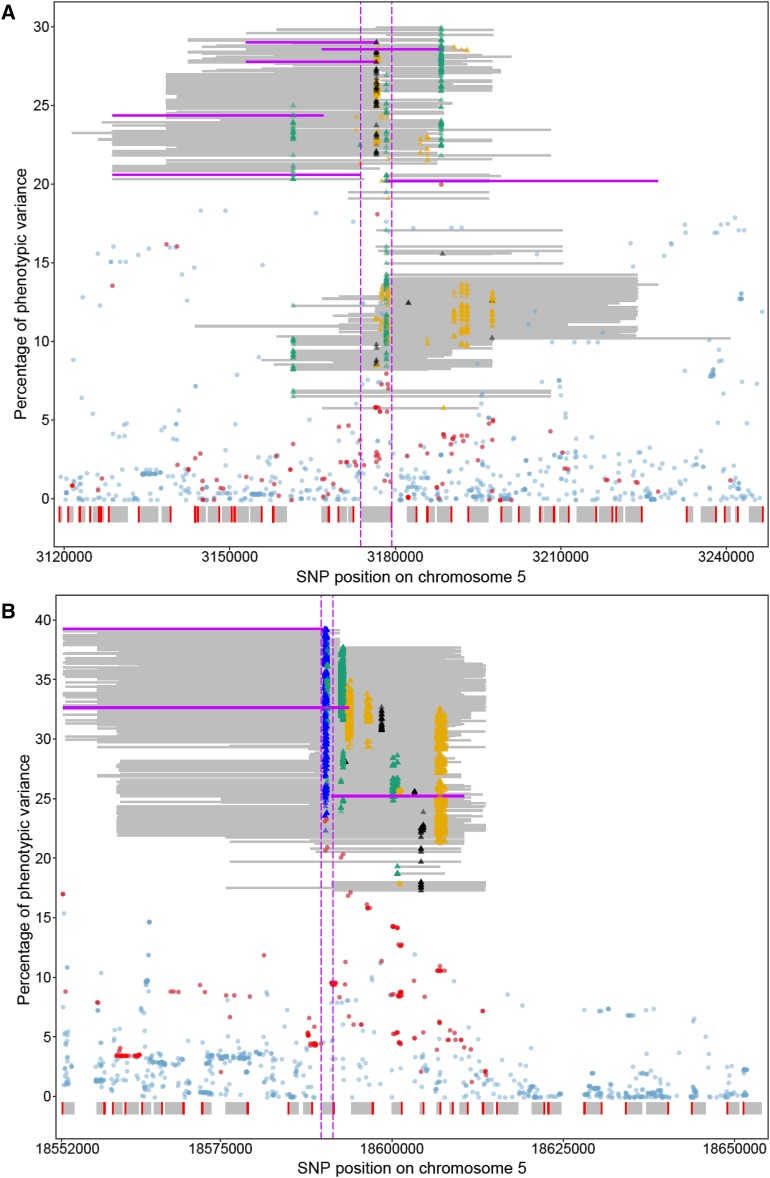Figure 4.
Proportions of explained phenotypic variance for the trait flowering time obtained by SNP-based and functional haplotype based GWAS in two different chromosome regions. Details for regions III and IV are illustrated for data set FT10 in panels (A) and (B), respectively. SNP positions on chromosome 5 and percentages of adjusted R2 values are shown on the x and y axes, respectively. Chromosome segments are illustrated for which overlapping functional haplotypes had been obtained, but only significant functional haplotypes are displayed as gray or pink lines. Representative significant functional haplotypes are indicated by pink lines. The beginning and end of the individual lines represent the chromosome positions of the first and third SNP of a particular haplotype, respectively. The SNP for which the lowest P value of a given significant functional haplotype was obtained is indicated as a colored triangle. Black, orange and green triangles represent P values ranging from 1 × 10−4 to 1 × 10−2, 1 × 10−6 to 1 × 10−4, 1 × 10−8 to 1 × 10−6, respectively. Blue triangles mark P values smaller than 1 × 10−8. Percentages of R2 determined for SNPs are displayed as translucent pale blue or red dots, those SNPs that were part of significant functional haplotypes are depicted in red. The coding regions of genes are shown as gray boxes and red lines represent 5′-regions. The position of the coding region of the candidate gene is marked by two vertical pink dashed lines.

